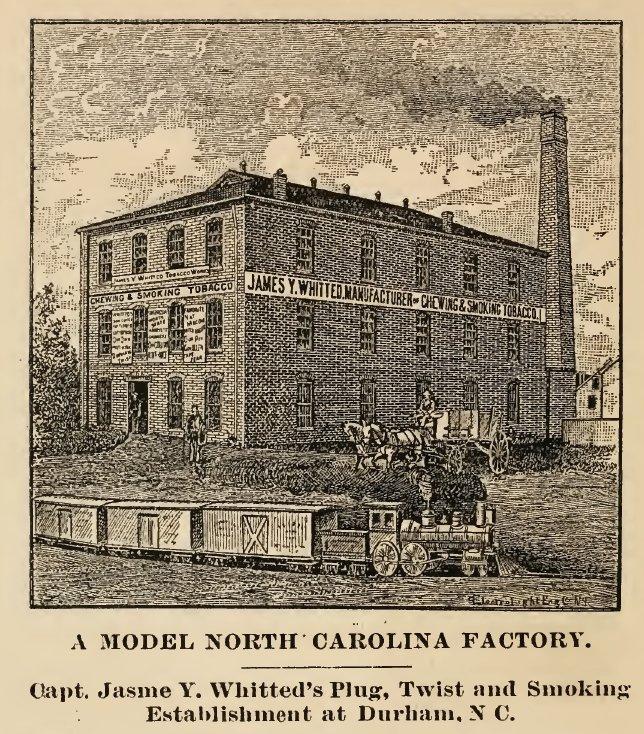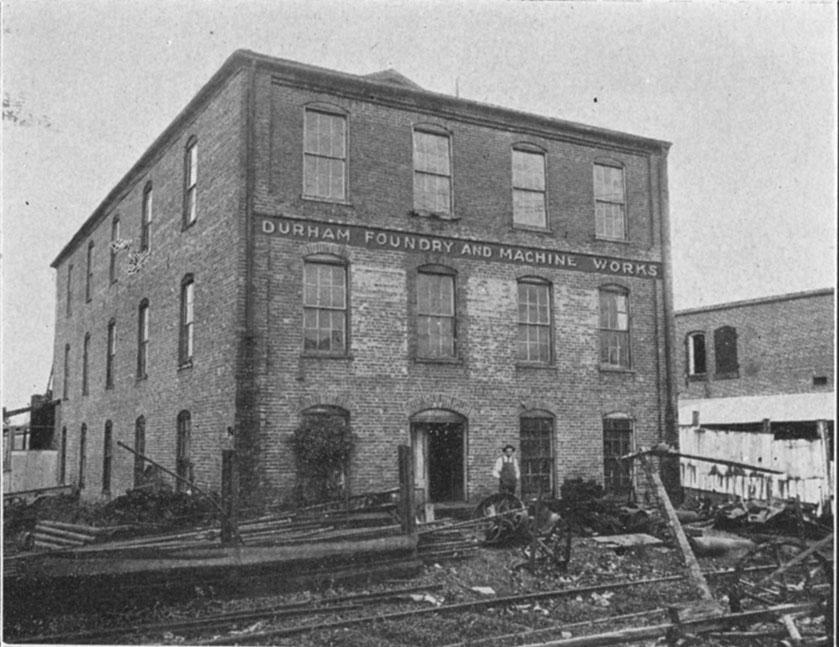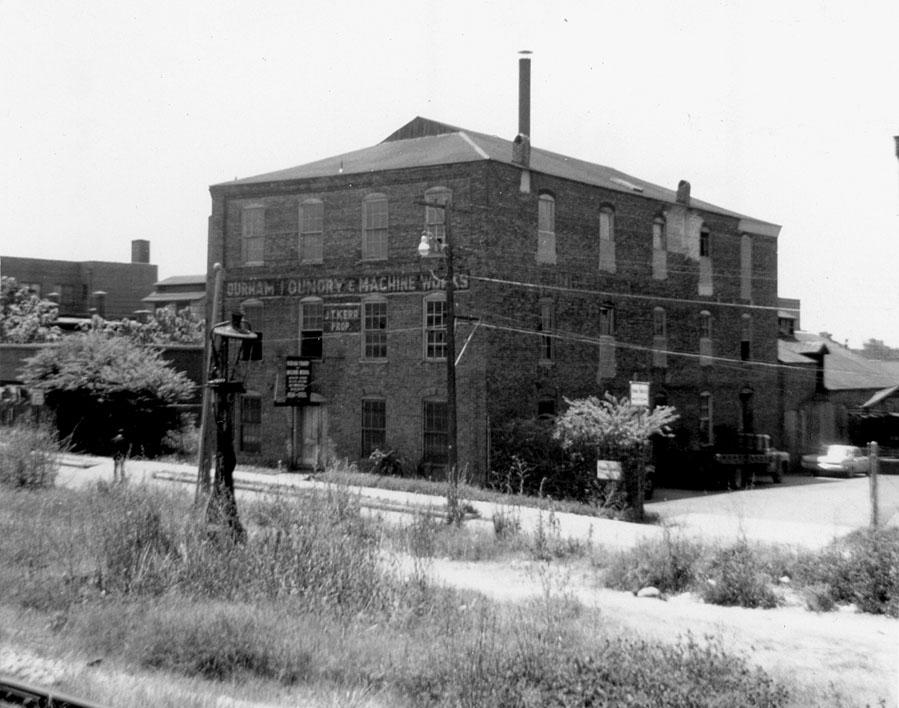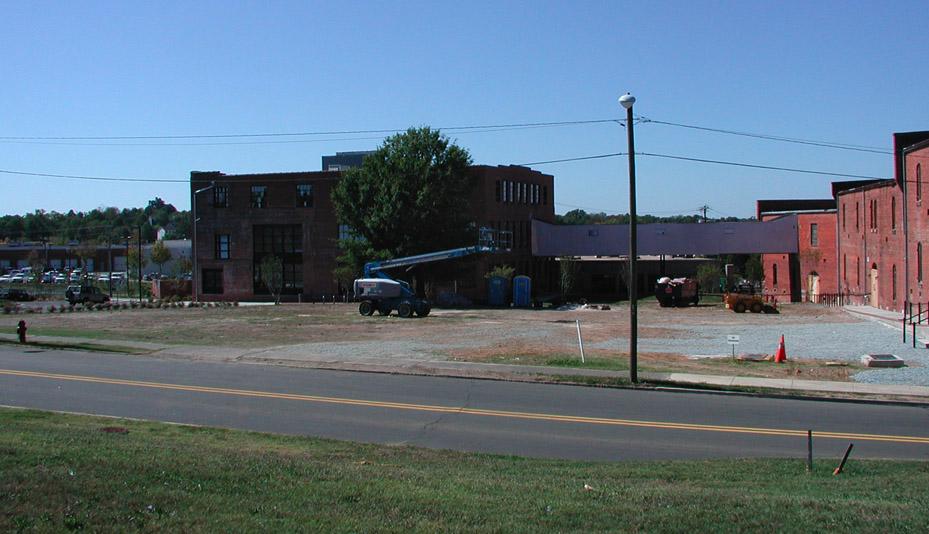Whitted Tobacco Company, 1895.
(Courtesy Duke Rare Book and Manuscript Collection / Digital Durham)
James Young Whitted began tobacco manufacturing in 1859 in Hillsborough in partnership with James Webb; their company was appropriately named Webb & Whitted. The company ceased operations at the beginning of the Civil War and Whitted was commissioned as a lieutenant in the Confederate Army. He mustered out of the army in April 1863 due to wounds sustained at Antietam.
Whitted reconstituted his tobacco business in 1867 under the name "J. Y. Whitted & Company."
Whitted moved his factory to Durham in May 1884, where he manufactured plug and twist tobacco under the brand names of "Harry Lee," "North State," "Walter Raleigh," "Gold Ambrosia," "Nat Macon," and "J. Y. Whitted's Sun Cured." His products were marketed in North and South Carolina, Georgia, Alabama, Texas, Florida, Louisiana, Tennessee, and Virginia. Originally located in a factory on Carr Street, Whitted soon built the brick factory pictured above, located on Railroad (East Pettigrew) Street, and had moved to that location by 1888. Architecturally, the building greatly resembled the contemporaneous Brodie Duke warehouse.
Whitted Factory, No. 25 on the Bird's Eye view above, 1891.
(Courtesy Duke Rare Book and Manuscript Collection / Digital Durham)
Per legend, Whitted played a key role in the future identity of Durham when he suggested to JR Green that the Bull on the Coleman's Durham Mustard jar would be a good emblem for Green's tobacco brand.
Whitted appears to have gone out of business between 1895 and 1897; although he is still listed as a resident in the 1897 directory, his tobacco company is no longer listed as a business. The building was purchased by the American Tobacco Company in 1899. The building, along with the former Z.I. Lyon Tobacco Co. building across Pine St., temporarily housed the Golden Belt Manufacturing Company after it left the Old Bull Building but before it moved to its newly constructed plant on East Main Street in 1901.
In 1904, the building became home to the Durham Foundry and Machine Works, established in 1888 by John T. Kerr. Kerr had grown up in Alamance County before departing to Davidson College, MIT, and subsequently working for a year in a Massachusetts textile Mill.
Kerr came to Durham in 1886, and worked for two years at the Commonwealth Cotton Co. Textile Mill. In 1888 he founded the Durham Foundry and Machine Works. The company was initially located on Ramseur Street, near present-day Fayetteville St., and employed 5 people. It moved to the 200 block of East Chapel Hill St. (later location of Rhodes Furniture) for about a decade prior to occupying the former Whitted Tobacco Co. building in 1904.
Looking southwest, 1905. The east side of the Venable Warehouse is in the background.
(Courtesy Durham County Library)
I have little detail at present about the business of the Durham Foundry; it was started by John T. Kerr, Sr., and later run by John T. Kerr, Jr., and John T. Kerr, III. In 1951, the business is described as "engaging in foundry and machine shop work and handling mill supplies" and in 1953, the company was described as providing "general repair and maintenance work for the tobacco factories, laundries, various contractors, and all types of casting and heavy foundry work."
By the 1960s, however, it was on the chopping block for urban renewal
Durham Foundry building, looking southeast from the railroad tracks, 1962.
(Courtesy Durham County Library / North Carolina Collection)
Looking southeast from the courthouse, 07.15.68
(Courtesy The Herald-Sun Newspaper)
The building was demolished by 1970. The dirt parking lot remained an 'island' in the middle of the Venable property, still owned by John Kerr, III, until it was purchased by Scientific Properties in 2008. It will become part of the asphalt surface parking lot for the Venable complex.
Looking south from the railroad tracks, 09.20.07. The Foundry building was located approximately at the center of the picture.
As I wrote on my post for the Venable campus, and I will continue to write as I move down Pettigrew Street, it is very suboptimal to have large quantities of surface parking along Pettigrew Street, which, because of its scale, still has the potential to be a walkable connector between Roxboro and parts east.
35.991857,-78.898842








Comments
Submitted by Anonymous (not verified) on Tue, 9/2/2008 - 7:13pm
Now that building was a sad loss for Durham!
Add new comment
Log in or register to post comments.